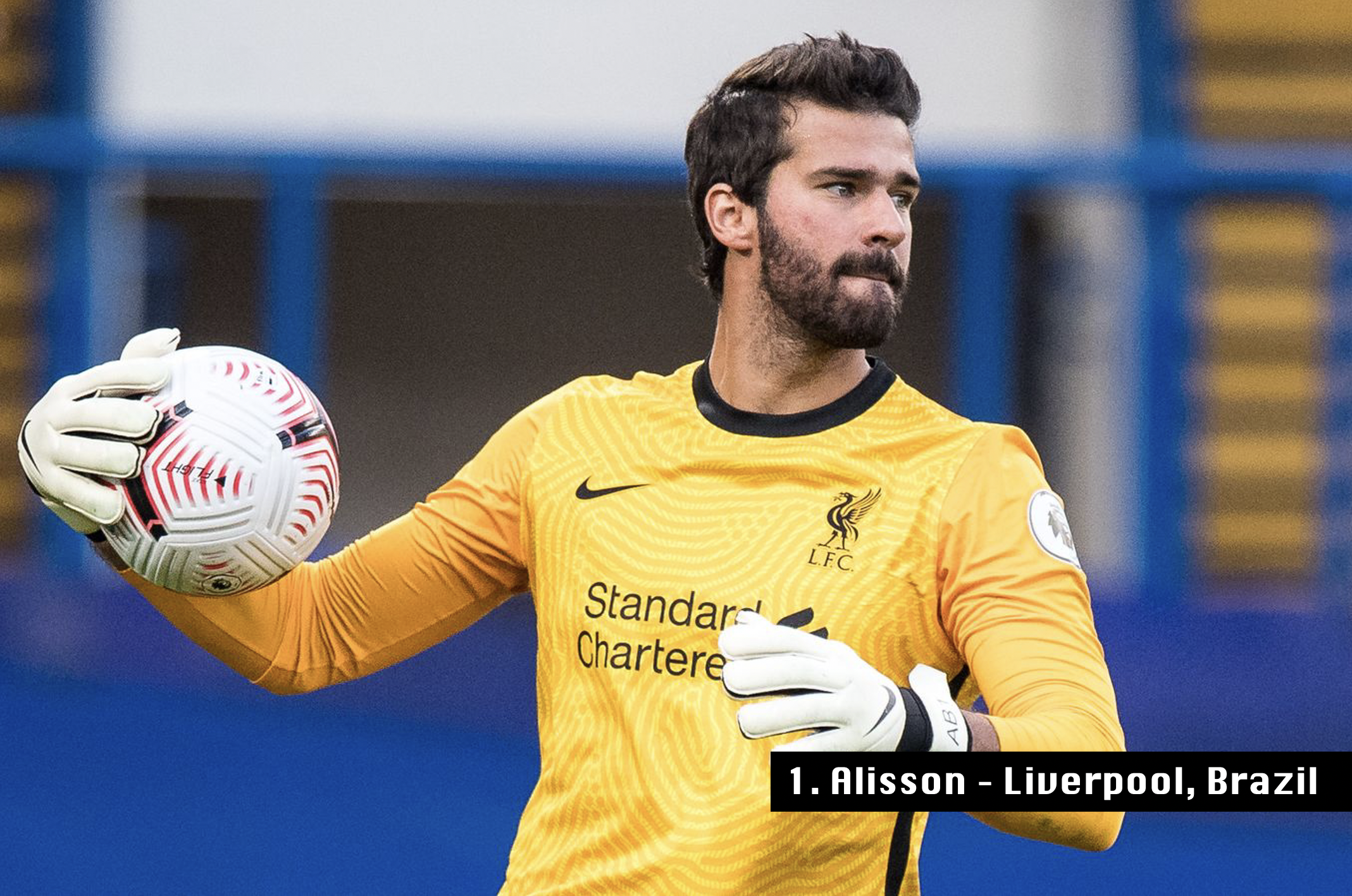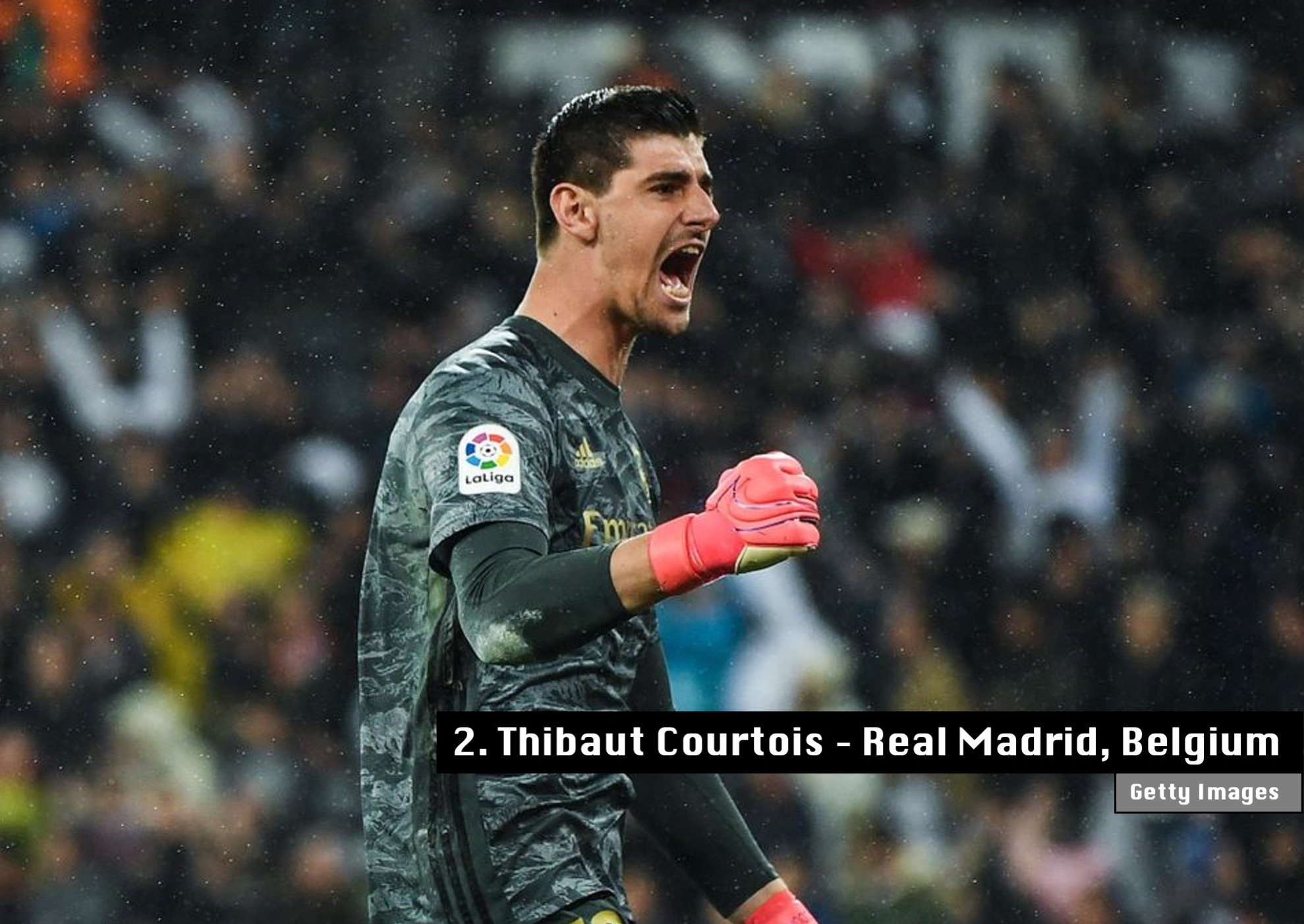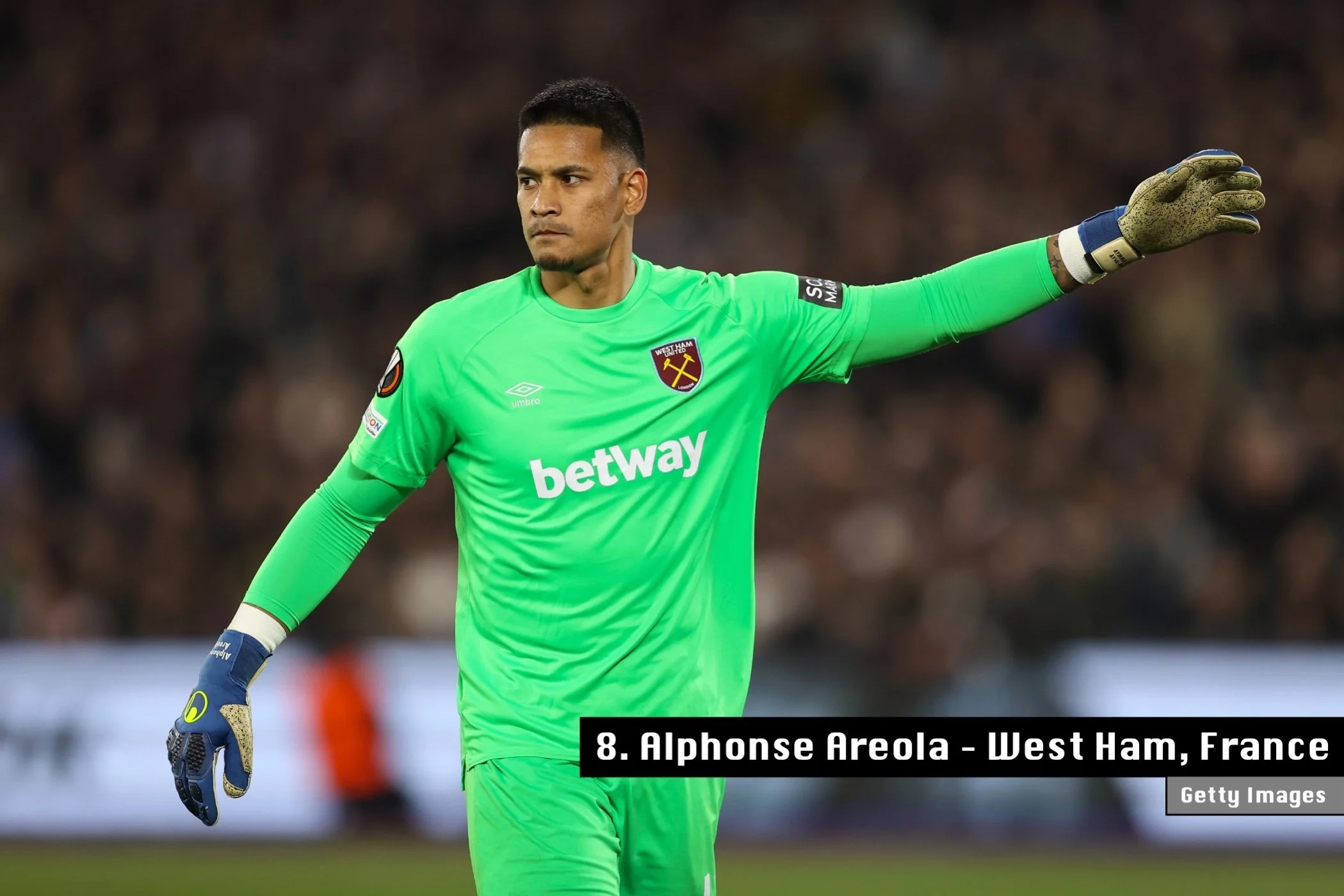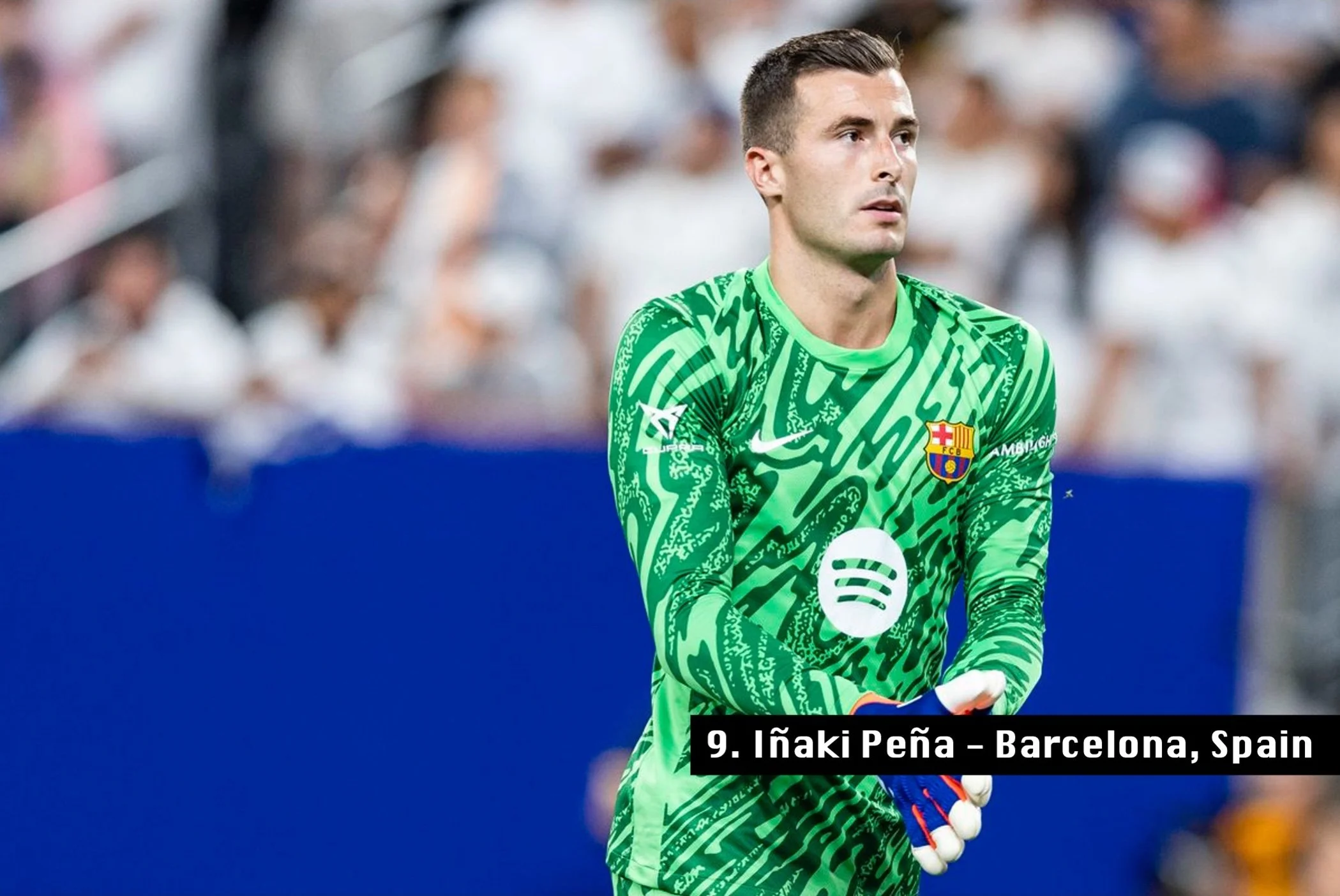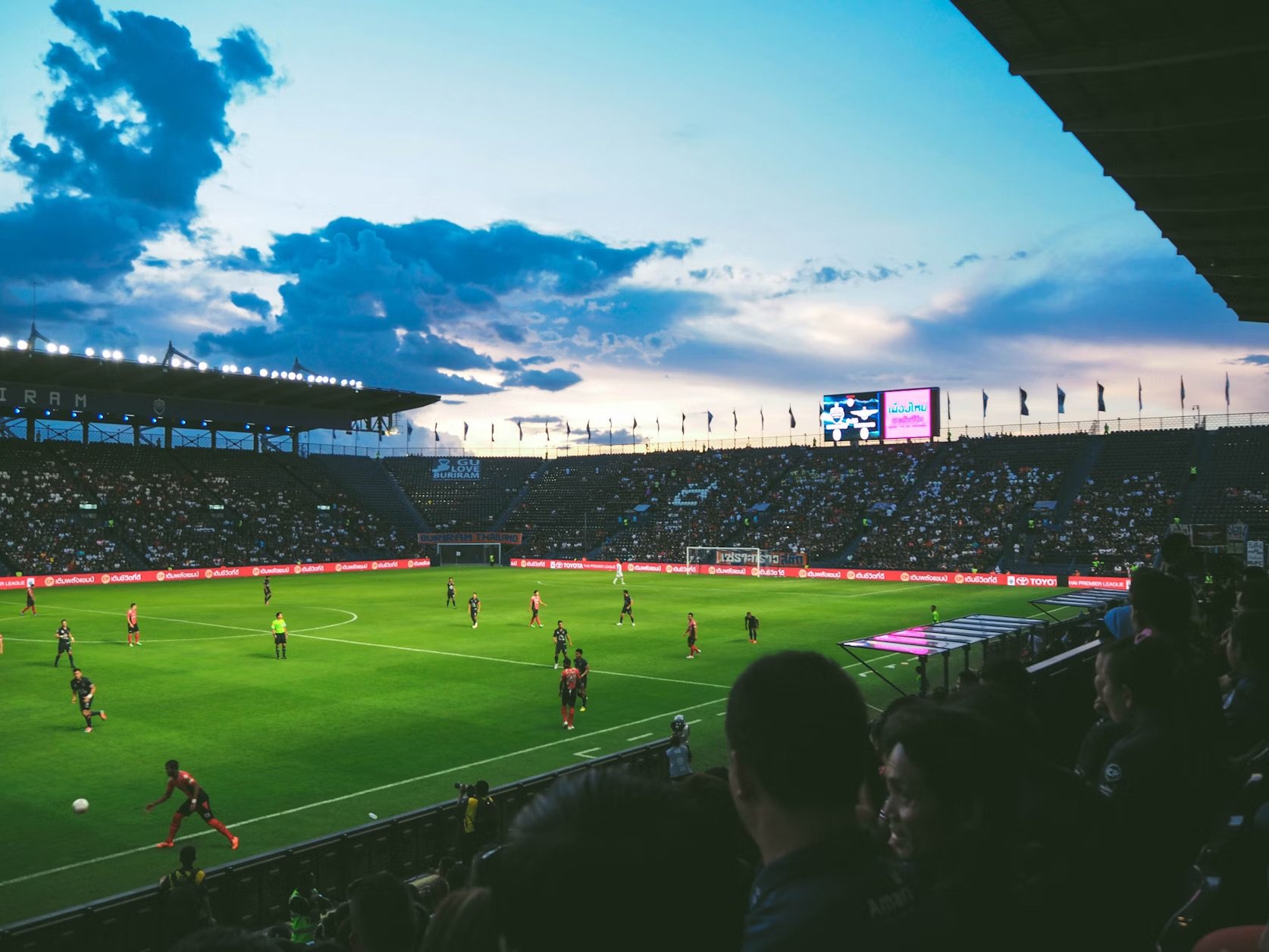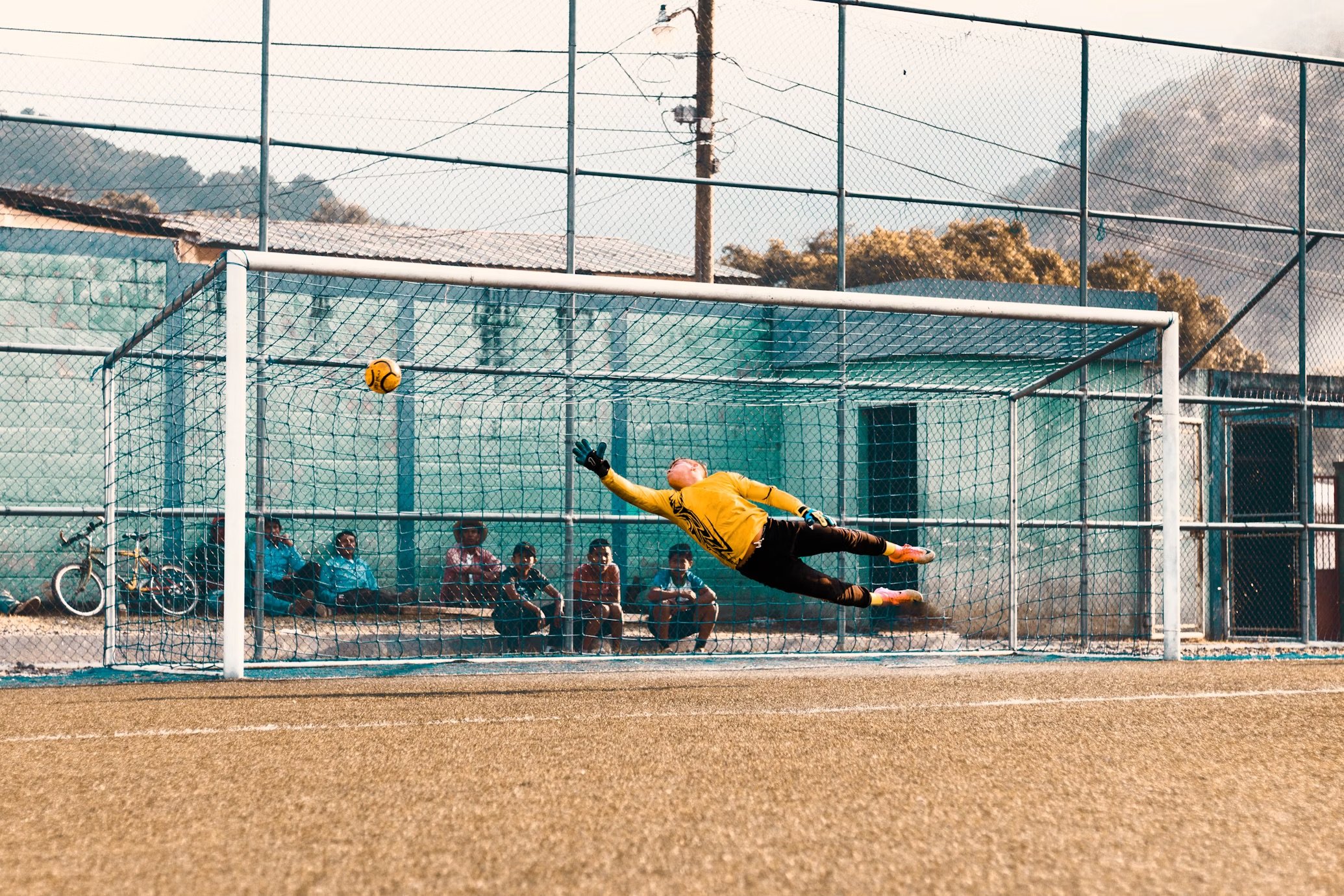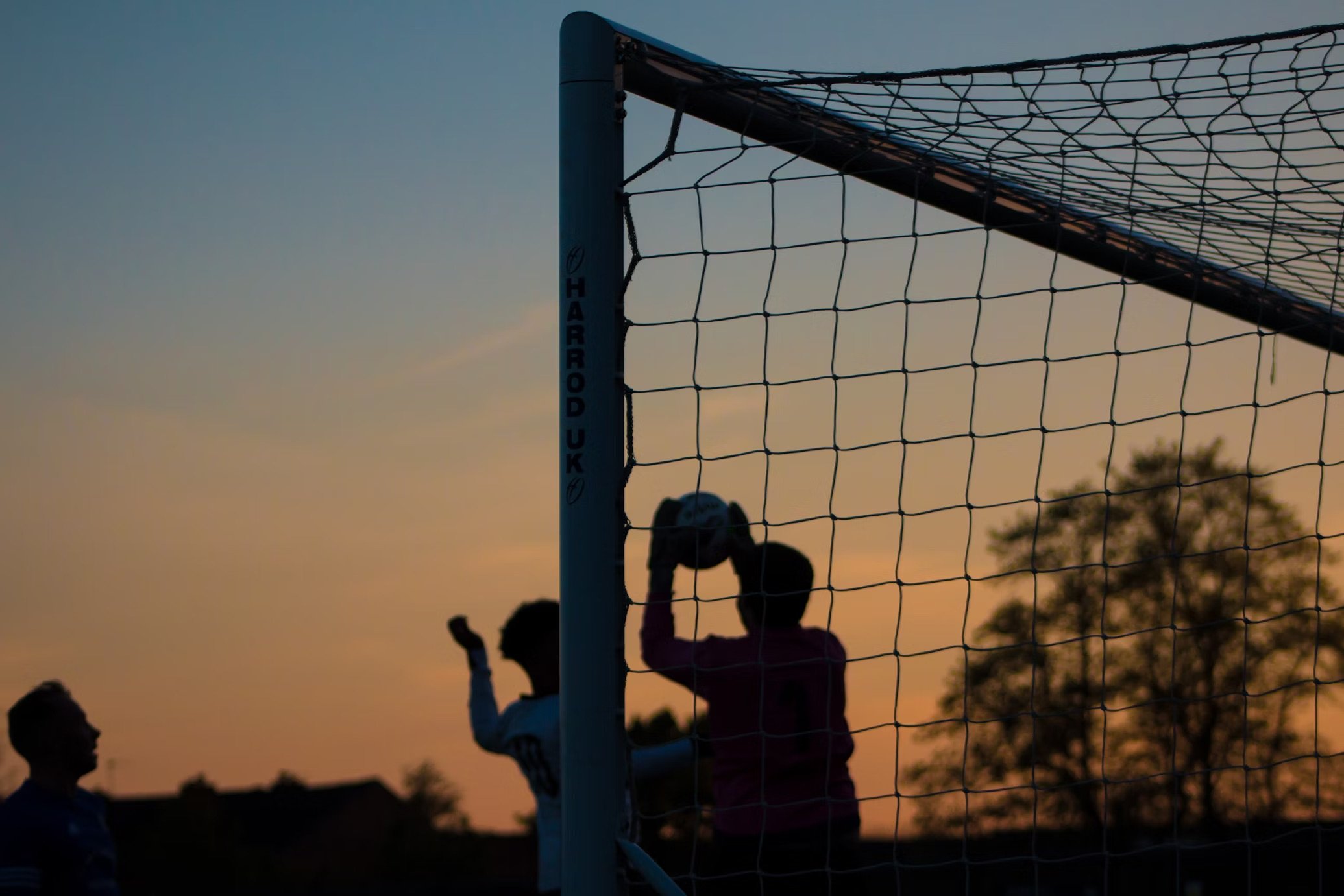Everybody Soccer returns with its installment of the top goalkeepers in the world. Goalkeepers are rated on their form with club and country, taking into account their success in shot-stopping, distribution, cross-management, and ability to improv on a broken play. To view past rankings, you can click here to see the prior lists in a spreadsheet or visit the list of the top 24 goalkeepers under 24 years old. Cover photo from Srdjan Stevanovic and Getty Images.
The rankings were last updated July 1st, 2025.
1. Alisson
Alisson Becker, Liverpool’s Brazilian wall, has redefined goalkeeping in the Premier League since joining from AS Roma in 2018 for a then-record £66.8 million. His knack for jaw-dropping saves and pinpoint distribution helped Liverpool win the 2019 Champions League and 2020 Premier League, ending a 30-year title drought. A soccer tidbit: he scored a dramatic header against West Brom in 2021, becoming the first goalkeeper to net a competitive goal for Liverpool. In 2024-25, his 12 clean sheets kept Liverpool atop the league. At 33, he’s still Brazil’s No. 1, pushing for another World Cup run in 2026.
2. Thibaut Courtois
Thibaut Courtois, Real Madrid’s towering Belgian, has been a defensive cornerstone since arriving from Chelsea in 2018, helping secure three La Liga titles and two Champions Leagues by 2025. His 6’7” frame and cat-like reflexes shone in the 2022 Champions League final, where he made nine saves to stifle Liverpool. At the 2018 World Cup, he won the Golden Glove, proving his clutch factor on the global stage. Despite a 2023 ACL injury, he returned to form, posting 15 clean sheets in 2024-25. At 33, he’s still Real Madrid’s undisputed No. 1, eyeing more silverware.
3. Jan Oblak
Jan Oblak has been a brick wall since joining from Benfica in 2014, racking up five Zamora Trophies as La Liga’s best goalkeeper. His calm demeanor and uncanny shot-stopping led Atlético to the 2021 La Liga title and a 2024 Champions League semifinal run. Oblak holds the record for the fastest to 100 clean sheets in La Liga, hitting the mark in just 182 games. In 2024-25, his 14 clean sheets kept Atlético in the title race. At 32, he’s still the backbone of Diego Simeone’s gritty squad.
4. David de Gea
David de Gea, now with Fiorentina in Serie A after a storied 12-year stint at Manchester United, was once the Premier League’s gold standard, winning the Golden Glove in 2018 and 2023. His acrobatic saves, like the iconic 14-stop masterclass against Arsenal in 2017, defined his United legacy. He’s still the only goalkeeper to win Manchester United’s Player of the Year award three years running (2014-16). Since joining Fiorentina in 2024, he’s posted eight clean sheets in 2024-25, proving at 34 he’s still got it. He’s aiming to lead Spain at the 2026 World Cup.
5. David Raya
David Raya went from Brentford’s breakout star to the Gunners’ main man in net after a £27 million transfer in 2024. His fearless distribution and quick dives were crucial in Arsenal’s 2024 Premier League title push, where he notched 16 clean sheets. Raya is one of only two goalkeepers to keep a clean sheet in his first three Arsenal starts, matching a club record set in 1997. In 2024-25, his 13 shutouts have kept Arsenal in the hunt for the title. At 29 and a crowded depth chart, Raya has his work once again cut out for him to maintain his number one spot.
6. Gianluigi Donnarumma
Gianluigi Donnarumma has been a prodigy since debuting for AC Milan at 16 in 2015, and now, at 26, he’s already a Euro 2020 champion. His penalty shootout heroics against England in that final earned him the tournament’s Player of the Year. Donnarumma is the youngest goalkeeper to start a Champions League knockout match, doing so at 18 for Milan in 2017. With 11 clean sheets for PSG in 2024-25, he’s kept them atop Ligue 1. He’s now targeting a 2026 World Cup to cement his legacy as Italy’s greatest.
7. Emiliano Martinez
Emiliano Martínez went from Arsenal’s bench to World Cup glory in 2022, saving four penalties in shootouts to clinch the title for Argentina. His move to Villa in 2020 sparked a career revival, with his 15 clean sheets in 2022-23 earning him the Premier League Golden Glove. In back-to-back years (2022, 2023) Martínez won the Yashin Trophy. In 2024-25, his 10 clean sheets have Villa eyeing a Champions League spot. At 33, he’s Argentina’s undisputed No. 1, hungry for more trophies.
8. Alphonse Areola
Alphonse Areola has been a steady force since joining permanently from PSG in 2022, helping the Hammers win the 2023 Europa Conference League. His loan spells at Real Madrid and Fulham showcased his agility, but it’s at West Ham where he’s truly shone, with 12 clean sheets in 2024-25. Interestingly, he’s the only French goalkeeper to win a European trophy with an English club in the last decade. His dual Filipino-French heritage makes him a fan favorite globally. At 32, he’s pushing for a France recall ahead of the 2026 World Cup.
9. Iñaki Peña
Iñaki Peña, Barcelona’s homegrown goalkeeper, has been Marc-André ter Stegen’s deputy since breaking into the first team in 2018, stepping up in 2024-25 with 10 starts and five clean sheets during ter Stegen’s injury spells. A La Masia product, he won the 2023 La Liga title as a backup, but his recent performances show he’s ready for more. In 2023, Peña became one of only three goalkeepers to keep a clean sheet in El Clásico as a substitute. At 26, he’s patient but ambitious, eyeing Barcelona’s No. 1 spot and a Spain call-up.
10. Manuel Neuer
Manuel Neuer, Bayern Munich’s legendary German goalkeeper, revolutionized the position with his “sweeper-keeper” style, winning 11 Bundesliga titles and two Champions Leagues since joining in 2011. His heroics in Germany’s 2014 World Cup triumph earned him the Golden Glove. Neuer’s longevity led him to rack up such records as most clean sheets in the Bundesliga, surpassing 200 in 2023. Despite a 2023 leg injury, he returned to form with 14 clean sheets in 2024-25, keeping Bayern dominant. At 39, he’s still Germany’s top choice, aiming to bow out at the 2026 World Cup.
Best of the Rest
rank. name - club, nationality (age)
11. Kepa Arrizabalaga - Arsenal, Spain (30)
12. Unai Simón - Athletic Bilbao, Spain (28)
13. Ederson - Manchester City, Brazil (31)
14. Julen Agirrezabala - Athletic Bilbao, Spain (24)
15. Marc ter Stegen - Barcelona, Germany (33)
16. Keylor Navas - Newell's Old Boys, Costa Rica (38)
17. Arnau Tenas - PSG, Spain (24)
18. Alex Remiro - Real Sociedad, Spain (30)
19. Kasper Schmeichel - Celtic, Denmark (38)
20. Andriy Lunin - Real Madrid, Ukraine (26)
21. Kjell Scherpen - Brighton, Netherlands (25)
22. Dominik Kotarski - FC Copenhagen, Croatia (25)
23. Kevin Trapp - Eintracht Frankfurt, Germany (34)
24. Matvey Safonov - PSG, Russia (26)
25. Jordan Pickford - Everton, England (31)
26. Mike Maignan - AC Milan, France (30)
27. Edouard Mendy - Al-Ahli, Senegal (33)
28. Wojciech Szczesny - Barcelona, Poland (35)
29. Giorgi Mamardashvili - Liverpool, Georgia (24)
30. Yann Sommer - Inter Milan, Switzerland (36)
31. Fernando Muslera - Estudiantes, Uruguay (39)
32. Robert Sanchez - Chelsea, Spain (27)
33. Bernd Leno - Fulham, Germany (33)
34. Illan Meslier - Leeds United, France (25)
35. André Onana - Manchester United, Cameroon (29)
36. Philipp Köhn - Monaco, Switzerland (27)
37. Caoimhin Kelleher - Brentford, Ireland (26)
38. Aaron Ramsdale - Southampton, England (27)
39. Ortwin De Wolf - KV Mechelen, Belgium (29)
40. Dean Henderson - Crystal Palace, England (28)
41. Bartlomiej Dragowski - Panathinaikos, Poland (27)
42. Diego Conde - Villarreal, Spain (26)
43. Diogo Costa - Porto, Portugal (25)
44. Robin Zentner - Mainz, Germany (30)
45. Peter Gulacsi - RB Leipzig, Hungary (35)
46. Gerónimo Rulli - Marseille, Argentina (33)
47. Marwin Hitz - FC Basel, Switzerland (37)
48. Lucas Perri - Lyon, Brazil (27)
49. Paul Bernardoni - Yverdon Sport, France (28)
50. Colin Coosemans - Anderlecht, Belgium (32)
